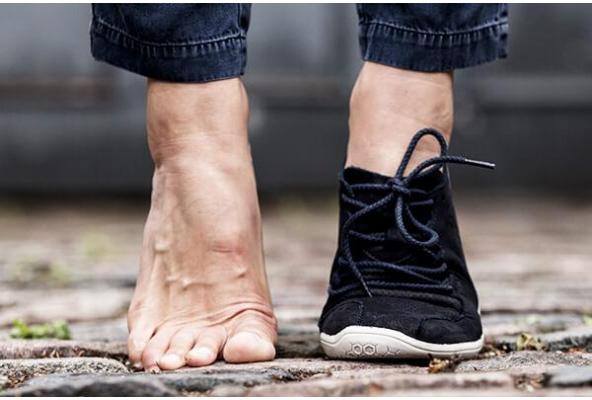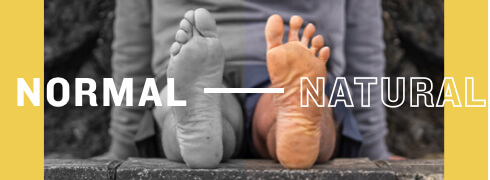"For a tree to become tall it must grow tough roots among the rocks." – Friedrich Nietzsche 1844 – 1900
Are you looking to improve your foot health, joint mobility and toe strength? Are you looking to re-engage your brain with your feet and take back control of your once dexterous toes? Re-learning how to use your feet is easy and could have benefits way beyond strong feet. Let us introduce you to the wonderful, enriching, world of Toe Yoga, or Toega.
BUT WHY WOULD ANYONE NEED TO RE-ENGAGE THEIR FEET?
There's a simple reason: a lifetime spent in narrow, rigid and cushioned shoes has probably not had a positive impact on your foot health – especially if you started wearing traditional shoes from an early age when your feet were soft and malleable. Over time the body adapts to its environment and non-foot shaped shoes often negatively impact the body’s hardware; adversely affecting the muscles, tendons, bones which make up the moveable joints required for movement and neural receptors and pathways which inform the brain on it’s position in space and time. This lack of information exchange between the feet and brain is commonly responsible for the recession in our ability to enjoy natural, injury-free movement.
WE HAVE FORGOTTEN HOW TO MOVE, BUT ALL HOPE IS NOT LOST!
There are some relatively easy, low-risk activities you can add to your daily routine without causing much disruption; small habitual changes that could have a big impact.
The first step towards happy, healthy movement should start in the toes and feet. The following Toe-ga exercises should be performed daily to improve mobility, flexibility and strength in the ankle, feet and toes. Do them twice a day if possible and give yourself 5–10 minutes to complete the exercises, the longer the better.
Being barefoot, if it’s safe to do so, or wearing appropriate footwear (ahem VIVOBAREFOOT shoes) for the majority of the time will allow your newly gained foot mobility to materialise as your feet adapt.
ROOTING THE BIG TOE
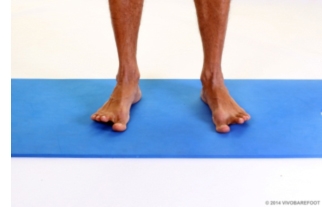

In a standing position, push the big toe down into the floor and raise the other four toes off the floor. This can be extremely challenging at first, so aim for small pulses of the movement. It’s also important to keep the ball of the foot in contact with the ground at all times, i.e. do not roll the foot inwards in order to lift the other four toes. When your proprioception starts to improve, aim to hold the other four toes off the floor while pushing down the big toe for up to 30secs.
BIG TOE UNDER
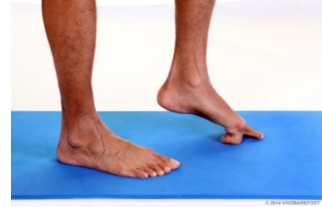

Bend the big toe underneath the foot – using your hands to assist if necessary. This can be an uncomfortable movement (often with restricted range of motion) so it’s important to use a soft surface when doing this exercise. It is important that the emphasis is on mobility at the 1st metatarsal joint. When viewed from above, it will appear as though the big toe has been chopped off.
BIG TOE OUT
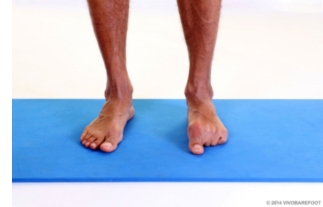

With or without assistance, bend the four smaller toes underneath the foot, leaving the big toe pointing forwards. In this position, root the big toe into the floor to improve strength in this position. The bending of the toes can be an uncomfortable movement so it’s important to use a soft surface when doing this exercise. Again, it’s important to emphasise mobility at the metatarsal heads – when viewed from above, it will appear as though the smaller toes have been chopped off.
SIT ON HEELS, BIG TOE PULSES
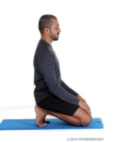

Keeping the toes facing forwards, sit back on the heels allowing the toes (and plantar surface of the feet) to stretch. Once in a relaxed position, push the big toes into the floor repeatedly (pulsing) allowing the body to gently rock back and forth.
HANDS ON HEELS, EXTEND HIP/SPINE
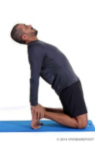

In the above position, place your hands on your heels and slowly extend the hip and thoracic spine as you straighten your arms. Once in this fully extended position, pulse the big toes as before, rocking the body back and forth.
SIT ON HEELS, PLANTAR FLEXION
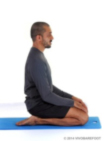

Sit on the heels once more, except this time, plantar flex the ankle allowing the toes to face behind you – this time you will feel the stretch on the front of the ankle/foot.
SIT ON HEELS, PLANTAR FLEXION, LEAN BACK
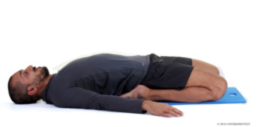

As you sit on the heels in the above position, gently lean back (supported by your hands) as far as is comfortable – feeling the stretch through the quads/hip flexors. Take care not to overstretch in this position.
Learn more about how to transition to healthy foot movement.
